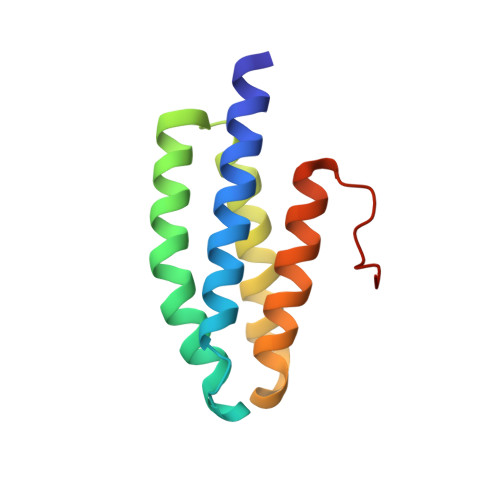In silico Design of Phl p 6 Variants With Altered Fold-Stability Significantly Impacts Antigen Processing, Immunogenicity and Immune Polarization.
Winter, P., Stubenvoll, S., Scheiblhofer, S., Joubert, I.A., Strasser, L., Briganser, C., Soh, W.T., Hofer, F., Kamenik, A.S., Dietrich, V., Michelini, S., Laimer, J., Lackner, P., Horejs-Hoeck, J., Tollinger, M., Liedl, K.R., Brandstetter, J., Huber, C.G., Weiss, R.(2020) Front Immunol 11: 1824-1824
- PubMed: 33013833
- DOI: https://doi.org/10.3389/fimmu.2020.01824
- Primary Citation of Related Structures:
6TRK - PubMed Abstract:
Introduction: Understanding, which factors determine the immunogenicity and immune polarizing properties of proteins, is an important prerequisite for designing better vaccines and immunotherapeutics. While extrinsic immune modulatory factors such as pathogen associated molecular patterns are well-understood, far less is known about the contribution of protein inherent features. Protein fold-stability represents such an intrinsic feature contributing to immunogenicity and immune polarization by influencing the amount of peptide-MHC II complexes (pMHCII). Here, we investigated how modulation of the fold-stability of the grass pollen allergen Phl p 6 affects its ability to stimulate immune responses and T cell polarization. Methods: MAESTRO software was used for in silico prediction of stabilizing or destabilizing point mutations. Mutated proteins were expressed in E. coli , and their thermal stability and resistance to endolysosomal proteases was determined. Resulting peptides were analyzed by mass spectrometry. The structure of the most stable mutant protein was assessed by X-ray crystallography. We evaluated the capacity of the mutants to stimulate T cell proliferation in vitro , as well as antibody responses and T cell polarization in vivo in an adjuvant-free BALB/c mouse model. Results: In comparison to wild-type protein, stabilized or destabilized mutants displayed changes in thermal stability ranging from -5 to +14°. While highly stabilized mutants were degraded very slowly, destabilization led to faster proteolytic processing in vitro . This was confirmed in BMDCs, which processed and presented the immunodominant epitope from a destabilized mutant more efficiently compared to a highly stable mutant. In vivo , stabilization resulted in a shift in immune polarization from TH2 to TH1/TH17 as indicated by higher levels of IgG2a and increased secretion of TNF-α, IFN-γ, IL-17, and IL-21. Conclusion: MAESTRO software was very efficient in detecting single point mutations that increase or reduce fold-stability. Thermal stability correlated well with the speed of proteolytic degradation and presentation of peptides on the surface of dendritic cells in vitro . This change in processing kinetics significantly influenced the polarization of T cell responses in vivo . Modulating the fold-stability of proteins thus has the potential to optimize and polarize immune responses, which opens the door to more efficient design of molecular vaccines.
- Department of Biosciences, University of Salzburg, Salzburg, Austria.
Organizational Affiliation:

















